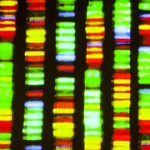WASHINGTON, D.C.—Experts at the 2016 ACR/ARHP Annual Meeting session, Systemic Lupus Erythematosus—Clinical Aspects and Treatment IV: Biomarkers, reported on a number of recent studies showing advancement in our understanding of the disease mechanisms underlying systemic lupus erythematosus (SLE) that place these patients at risk for cardiovascular disease (CVD) and other comorbidities. Mechanisms of CVD Risk…

Environmental Factors in Pediatric Systemic Autoimmune Diseases
Systemic autoimmune diseases are thought to result from immune dysregulation in genetically susceptible individuals who were exposed to environmental risk factors. Many studies have identified genetic risk factors for these diseases, but concordance rates among monozygotic twins are 25–40%, suggesting that nonheritable environmental factors play a more prominent role.1,2 Through carefully conducted epidemiologic and other…

Otulipenia: From Inflammatory Case Studies to Treatment
Otulipenia is a recently discovered autoinflammatory disease caused by germline mutations, which results in dysregulated ubiquitination in patients. In a small-scale study, researchers used exome sequencing and candidate gene screening to identify three different loss-of-function mutations in the OTULIN/FAM105B gene in patients…

2015 ACR/ARHP Annual Meeting: Genetically Complex Auto-Inflammatory Diseases
SAN FRANCISCO—Early in his career, Daniel Kastner, MD, PhD, scientific director at the National Human Genome Research Institute, saw a 24-year-old patient with a lifelong history of recurrent fever and severe episodes of arthritis. A colleague told him it was most likely familial Mediterranean fever (FMF). There was little then known about its mechanisms, and…

2015 ACR/ARHP Annual Meeting: RA Pathogenesis and Prevention
SAN FRANCISCO—Evolving research into the pathogenesis of rheumatoid arthritis (RA) is increasingly showing that rather than a single causative dysfunctional pathway leading to disease, multiple pathways are involved, the study of which can shed additional light on what is occurring in a person’s body prior to developing symptoms of disease. Saying it another way, no…

2015 ACR/ARHP Annual Meeting: Next Generation Sequencing and Disease Mechanisms
SAN FRANCISCO—By harnessing the power of next generation sequencing strategies and combining them with clever statistical strategies and tools, investigators are striving to define causal pathways of and mechanisms underlying complex diseases, such as rheumatoid arthritis, according to Soumya Raychaudhuri, MD, PhD, associate professor, Harvard Medical School, Brigham and Women’s Hospital, Boston, during a session…

Large Group Study of Systemic JIA Patients Provides Insight into Disease Pathology
In a large group genetic analysis, researchers identified an association between the class II HLA region, including HLA-DRB1*11, and systemic juvenile idiopathic arthritis (sJIA), implicating adaptive immune molecules in sJIA’s pathogenesis and reinforcing its unique genetic position among JIA subtypes…
Genetic Risk Factors for Rheumatoid Arthritis Merit More Research
New report determines additional risk factors need to be identified, studied before RA heritability can be fully explained
ADA2 Mutation Connects Vascular Pathology to Immunodeficiency
Two new studies that examine the effects of a genetic defect in adenosine deaminase 2 may advance a gene-based definition of vasculopathy
DNA Methylation Modifies Genetic Risk for Rheumatoid Arthritis
A first-of-its-kind study has been published that integrates genotype and epigenotype data across the entire genome.